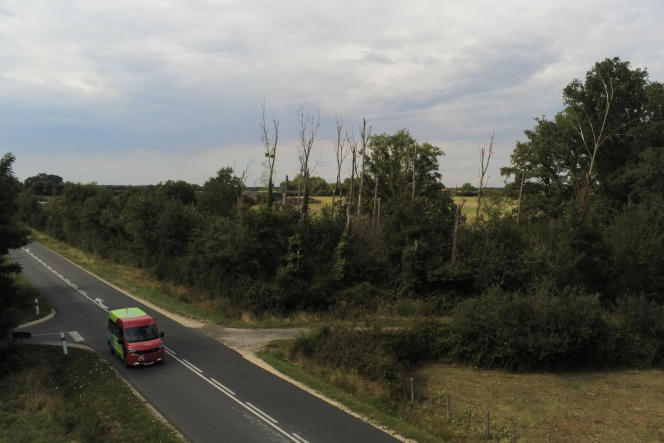Three kilometers. This is the distance that separates Monique Poulain from the convenience store in Sèvres-Anxaumont (Vienne) where she usually does her shopping. “I would go cycling but it’s absolutely impossible, regrets the 73-year-old retiree. The road is narrow, [seulement] limited to 80 kilometers per hour, and the cars are not paying attention. » To move around safely, she has no choice but to take her car.
Unlike the majority of cities where cycle paths have multiplied in recent years, the countryside is lagging behind. “We have long considered cycling as a hobby and not as a means of getting around on a daily basis”, analyzes Jean-Philippe Dusart, project manager in mobility for the department of Morbihan. As a result, cycling facilities outside urban areas are often greenways which are certainly suitable for leisure, but not for everyday cycling.
Etienne Demur deplores this, he who observes a craze for cycling despite the absence of official data. The co-founder of the Vélo Occitanie collective decided two years ago to cycle twenty kilometers every morning to go to work. His initiative inspired many of his colleagues at the Royal Canin factory in Aimargues (Gard).
A trend that Olivier Schneider, President of the Federation of Bicycle Users, confirms and explains by several factors. “These are very rarely ecological reasons, which are rather collateral beneficial elements, he deciphers. The main reason is the need to have time for oneself, to play sports and the price of fuel. » The engineer also notes an acceleration of this trend with the electrically assisted bicycle, which has made two-wheelers more attractive and allows longer distances to be covered.
“Ecosystem to rethink”
A craze hampered by the lack of cycling facilities, according to the “velotafeur” of the Gard. “Finding a good cycling route when you’ve spent your life in the car is complicated. The locals are very unfamiliar with the network of small secondary roads and therefore they do not plan there”, says Etienne Demur. To get to his factory without danger, he had to imagine a route on his own that goes through rural roads to avoid car traffic on the main roads. According to him, the daily practice of cycling depends mainly on the existence of easily accessible safe routes.
The feeling of insecurity among cyclists is all the stronger as the number of accidents outside urban areas has exploded in 2022: according to the report of the National Interministerial Observatory for Road Safety published on May 31, 135 cyclists died in areas non-urban. An increase of 44% compared to 2019.
You have 56.42% of this article left to read. The following is for subscribers only.
